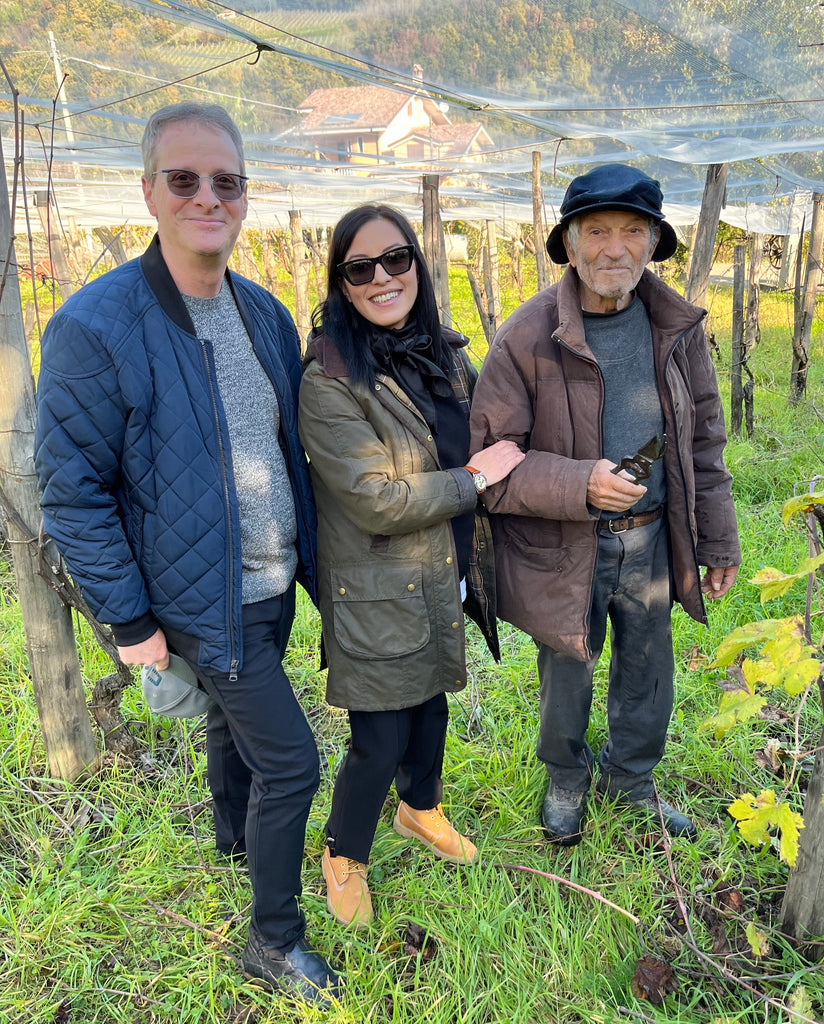Our tasting impressions (Updated)
Early tastes of Lapazio 2022 had us thinking it was lighter, softer and less complex than the 2021. More recently, it's apparent that those were premature ideas. It is bright, lively and utterly food-friendly. In fact, the fruit is more front-and-center and it is more intensively mineral. The nose is more open - you can really taste the clay soil. For drinking presently, the 2022 would be our choice. Given the evolutionary arc of this wine, the sky could be the limt.
About this wine
The blend is 40% Fiano, 40% Falanghina, 10% Coda di Volpe and 10% other unclassified, native varieties. They grow in fine-grained clay soil in rock at 450 meters.
Grapes were manually harvested starting on October 6th, with strict selection of the best fruit. A cold maceration is done with the skins for 48 hours. Fermentation, at 16-18° C, occurs for 70% in tonneaux and 30% in stainless steel tanks. It ages in the same vessels on the lees for 5 months before blending into bottles. Release is 2 months later, at the earliest. 2,500 bottles produced in 2022.
About the grape blend
Fiano is one of Italy's most noble white grapes and is the pinnacle of Southern Italian varieties. It is a low-yielding grape whose character is highly dependent on terroir. Resulting wines can range from angular and mineral-driven to nutty and rich. The best wines are capable of long and productive aging. Falanghina, which may have been the most famous wine grape of Ancient Rome, provides acidity and mineral and floral flavors. Coda di Volpe named for its long, hanging grape fox tail like bunches contributes fruit, spice and structure. The rest of the grapes are unclassified, and even Francesca doesn't know the names of some of them.
Francesca's thoughts on the vintage
The winter was rainy, particularly in February and March. Spring was dry and flowering and fruit occurred as expected. At the end of June, there was a spike of heat which slowed the development of the vines. Lower temperatures in July got them back on track. Another heat wave in the first two weeks of August accelerated ripening. It was a year in which very careful and diligent vine management was critical to the ultimate favorable result.
Click here for information about this producer and other wines from them.
Francesca Fiasco is young, passionate and driven. Since 2015, she has relentlessly worked the land and cellar her grandparents started many decades ago in the beautiful Cilento National Park (a preserve that prohibits any industrial activity). Everything she knows about farming and wine she learned from her Nonno. More than 90 years old, Luigi still tends the vines.
From the 6.5 hectare farm (comprised of various small vineyards), Francesca produces less than 20,000 bottles per year from a mixture of traditional local grapes, some typical of other regions of Italy and one conspicuous interloper from France - Cabernet Sauvignon. Production of her 4 wines is unconventional - it's Nonno's way - but the results are remarkable. The expectation from a farm like this, in an area like this, is that the wines will be rustic, simple and honest. Instead, we find sophistication and complexity without compromising a clear expression of the place they come from.
To say that this is manual labor is an understatement. It starts with the grapes for each wine being harvested separately and concludes with Francesca writing notes on each case of wine leaving her cellar. Her devotion and determination are undeniable. The wines from Paestum may not be well-known or highly regarded but don't tell her that - nor does anyone who has tasted her wines much care. Wow, what a discovery! Only the great story of this family and Francesca's project can outshine her wines.
